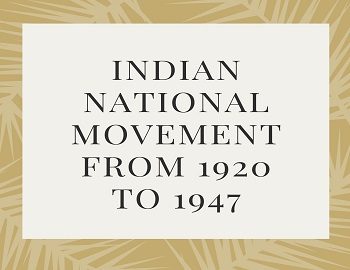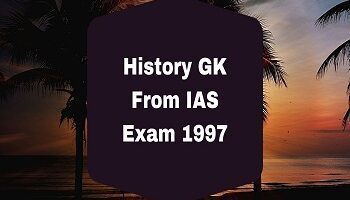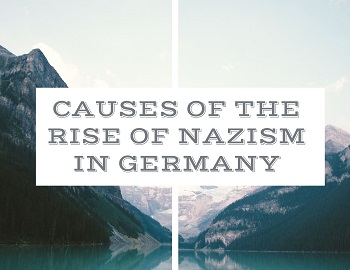Progress of Indian National Movement From 1920 to 1947:
The growth and struggle of the Indian Nationalist Movement of India from 1920 to 1947 was as follows-
- In 1920 A.D. Mahatma Gandhi started the Non-Cooperation Movement against the Rowlatt Act and the Jallianwala Bagh Tragedy. The people took a keen interest in this movement but this movement could not remain peaceful. At a place named Chauri Chaura (in U.P.) when the police opened fire on innocent people the crowd burnt the police station causing the death of 22 policemen. Therefore the priest of non-violence Mahatma Gandhiji withdrew this movement in 1922 A.D.
- In 1923 A.D. leaders like Motilal Nehru, Chitranjan Dass and Lala Lajpat Rai formed the Swarajya Party and contested the assembly elections successfully. But because they failed to change the reactionary policies of the British government so they resigned in 1926 A.D. and joined the mainstream of the National Movement.
- The Simon Commission was sent to India in 1927 A.D. It was received with ‘Black Flags’ everywhere. In one demonstration Lala Lajpat Rai was injured and later on, he died on November 17, 1928 A.D.
- At the Lahore Session of the Indian National Congress which was held under the presidentship of Jawahar Lal Nehru in 1929 A.D. the resolution of Complete Independence was passed. That it would celebrate January 26, as the Independence Day all over the country. Congress would launch a Civil Disobedience Movement under the leadership of M.K.Gandhi.
- Mahatma Gandhi started the Second Civil Disobedience Movement in 1930 A.D. with the Dandi March. This movement was called off in 1934. In 1935 A.D. the British Government passed the Government of India Act 1935.
- In 1937 A.D. the elections were held. The Indian National Congress Party formed ministers in U.P, C.P., Bihar, Orissa, Bombay, Madras, later in N.W.F.P and Assam. In 1939 A.D. the Second World War broke out and the British Government of India joined the war without consulting the Congress, therefore, the Congress Ministries resigned in protest.
- At the Lahore Session of the Muslim League in 1940 A.D., Mohammed Ali Jinnah demanded a separate homeland for the Muslims and called it Pakistan.
- In 1942 the Indian National Congress launched the Quit India Movement under the leadership of Mahatama Gandhi. Again all the Congress leaders were arrested and the Congress was declared illegal. The Second World War ended in 1945. There was a drastic change in the attitude of the new British Government to grant freedom to India. The Shimla Agreement took place in 1945. The Interim Government was formed in 1946 and the Constituent Assembly too started its work in the same year. India got independence on 15th August 1947 A.D. but it was partitioned into two parts- India and Pakistan. This is how India won her freedom.









Comments (No)